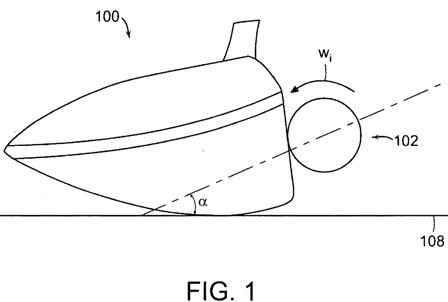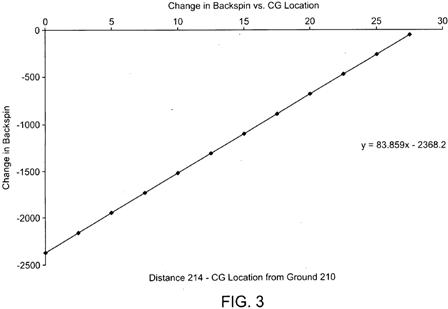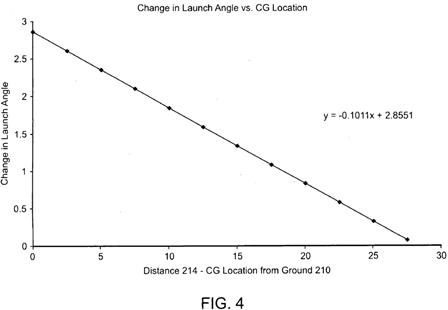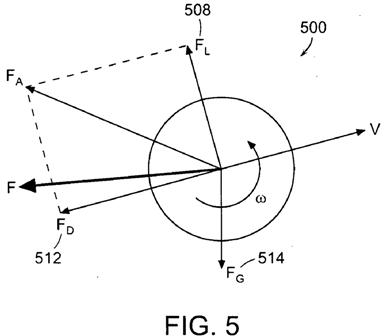How Long Before We Have to Buy Specific Balls Designed for Our Specific Driver?
I have to hand it to Acushnet, they definitely try to think of every way possible to retain their grip on the golf ball market. One of their recently published patent applications reveals one such strategy. The application published as US Pub. No. 20100234125 titled “High Launch and Low Spin Golf Ball and Golf Club Combination.” The application describes the invention as:
The application goes on to explain:




Interesting!
Dave Dawsey - The Golf Intellectual Property Attorney
PS – click here to check out other driver and wood design posts
The present invention is directed to a golf club and golf ball combination that maximizes the distance of travel when the golf club strikes the golf ball. More specifically, a golf club and golf ball combination capable of generating a higher launch angle combined with the lower spin rate to maximize the distance. The golf club in accordance with the present invention may generally have a lower center of gravity, a higher loft angle, or may even have a coating on the club face that optimizes the coefficient of friction between the golf club and the golf ball. The golf ball in accordance with the present invention may generally have a ratio of the coefficient of lift near the beginning of flight to the coefficient of lift near the end of the flight within a range that maximizes flight distance, with similar ratios in appropriate ranges for the coefficient of drag and the lift-to-drag ratio.
The application goes on to explain:
A few drawings from the application are below, however click HERE if you want to review a PDF of the entire application (it has too many symbols and equations for me to cut and paste the interesting content in the post without a lot of time spent error checking).[0002] The complexities of golf club design are known; further, the complexities of golf ball design are also known. The design specifications for a golf club and a golf ball directly impact the launch conditions generated by a golf swing. Designed separately, the design of a golf club and a golf ball can both individually contribute to improved performance characteristics such as high launch and low spin. However, these designs, although effective in maximizing launch angle and minimizing spin rate individually, fail to take into consideration the additional performance gains that are possible by correctly matching a golf club and a golf ball. Thus, varying the performance characteristics of a golf club in parallel with the performance characteristic of a golf ball can produce a synergistic improvement in the performance characteristics of both of the components.
[0003] With respect to the improvements in golf club heads, the current industry has been focused primarily on creating a golf club head that controls and improves the flight characteristics of a golf ball after impact with the golf club head. Amongst the prominent considerations in golf club head design are loft, lie, face angle, horizontal face bulge, vertical face roll, center of gravity, rotational moment of inertia, material selection, and overall head weight. In addition to the above mentioned design variations, the center of gravity is often adjusted to be moved to various locations within the golf club head to increase launch angle and control the spin of the golf ball. One example is described in U.S. Pat. No. 7,407,447 to Beach et al. for a Movable Weight for a Golf Club Head. In that example, embodiments of movable weights, such as weight assemblies and weight screws, for a golf club head are disclosed. More specifically, in one configuration, the club head CG is in a center-back location, resulting in a high launch angle and a relatively low initial spin rate for optimal distance.
[0004] Another example is described in U.S. Pat. App. 2007/0155532 to Adams for a Golf Club Head. In that example, a golf club head includes a club head body having a striking face, a soleplate, a toe, a heel and a hosel, wherein at least a portion of the body shell is composed of a flexible material having a density of less than approximately 2.5 g/cm.sup.3, and a tensile strength of at least approximately 465 MPa/(g/cm.sup.3). More specifically, one may position the weight member(s) on the soleplate, but position it all the way back to increase launch angle while keeping the backspin relatively low (High Launch/Low Spin) or position it all the way forward to control launch angle, lower spin and also lower the amount of gear effect spin caused by off-center hits.
[0005] With respect to golf ball design, the golfing industry has been struggling between the two dichotomies of golf ball designs to either create a hard ball with enhanced flight characteristics or a soft ball with enhanced feel and control. Hard golf balls that have good flight characteristics as well as good rebounding characteristics that minimize spin can tend to sacrifice feel and control. Soft golf balls on the other hand, although capable of providing great feel and control, have less than optimal rebounding characteristics, and generally create too much spin to maximize distance.
[0006] One example of a hard ball design can be seen in U.S. Pat. No. 6,743,124 to Tsunoda et al. for a Golf Ball. In that example, a golf ball with a low spin rate, a high launch angle, and an increased flight distance is characterized by a ratio of primary natural frequency of the golf ball in a direction in which the ball deforms to a primary natural frequency of the ball in vibration mode along a direction of torsion being in the range of 2.22 to 2.45. More specifically, the solid core can effectively be formed from a plurality of layers having a complex modulus smallest at the inner core, larger at the intermediate layer(s) and the largest at the outermost layer to achieve a value in the range of 2.22 to 2.45.
[0007] Alternatively, other examples attempt to strike a balance between a hard golf ball having increased distance and a soft golf ball having increased feel and control. For example, in U.S. Pat. No. 7,232,383 to Kato et al. for a Three-Piece Solid Golf Ball, a three-piece solid golf ball having long flight distance by accomplishing low ball rotation rate and high launch angle at the time of hitting while maintaining good shot feel is disclosed. More specifically, a three-piece solid golf ball comprising a core composed of a center and an intermediate layer formed on the center, and a cover covering the core and having many dimples on the surface thereof is disclosed.
[0008] In another example described by U.S. Pat. No. 7,354,357 to Sullivan et al., a Multi-Layer Core Golf Ball having an improved multi-layer construction displaying enhanced playing characteristics including high speed, high launch, and low spin is disclosed. More specifically, a golf ball that displays improved performance in areas such as distance and feel for lower swing speed players having a relatively large solid inner core, with at least one solid outer core layer surrounding the inner core, and a thin cover layer surrounding the outermost core layer is disclosed.
[0009] Despite numerous attempts to improve ball flight characteristics in terms of high launch and low spin, the current art has been focused on addressing each of the two important components separately. More specifically, the current art utilizes shifting of weights in a golf club head as well as shifts in the center of gravity location within a golf club head without any consideration for a matching ball design. Alternatively, the current art has also attempted to address the problem by focusing on golf ball design utilizing multiple materials having different hardnesses, different core constructions, or even different complex modulus variations with little consideration for matching the golf club head.
[0010] Hence, it can be seen that there is a need in the field for a golf club and golf ball combination that work in conjunction to optimize and enhance the performance characteristics of the respectively paired equipment. More specifically, there is a need for a golf club that optimizes its design characteristics around that of a golf ball to maximize high launch and low spin; and for a golf ball that optimizes its design characteristics around that of a golf club to maximize high launch and low spin, while providing matching aerodynamics to optimize the overall flight performance.




Interesting!
Dave Dawsey - The Golf Intellectual Property Attorney
PS – click here to check out other driver and wood design posts

Comments